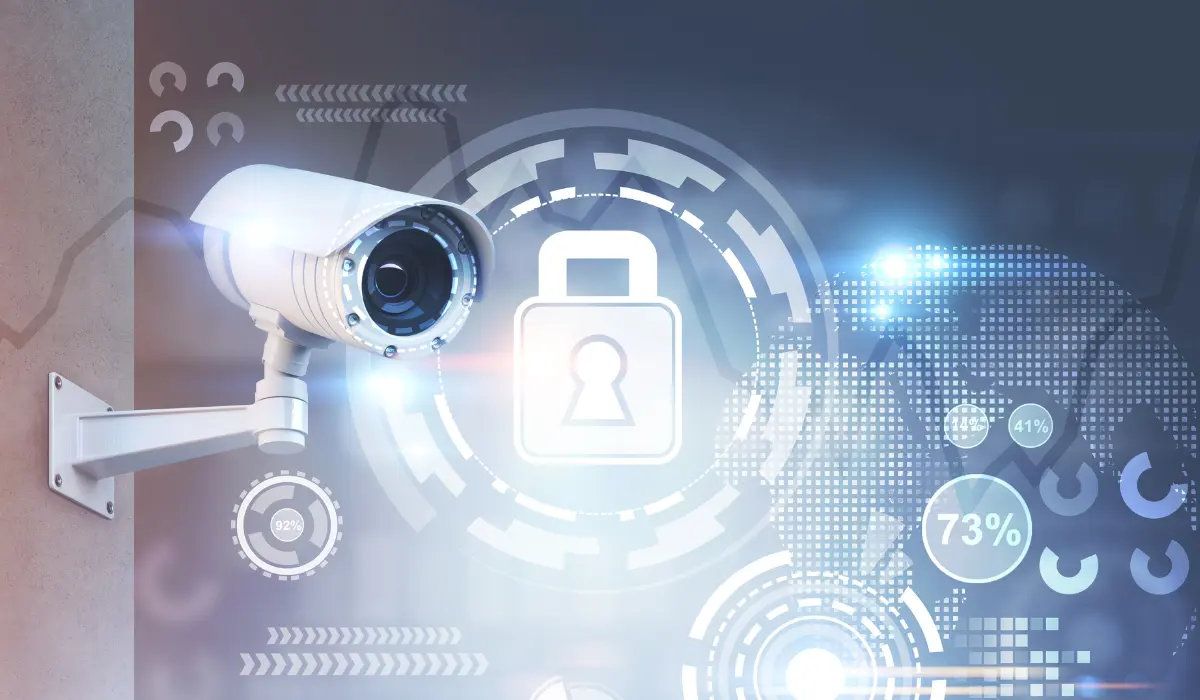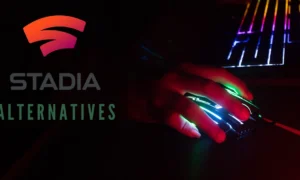The global security camera market size is estimated to be worth $7.37 billion in 2022 and is expected to grow at a compound annual growth rate (CAGR) of 19.2% from 2023 to 2030. The global number of households with smart security cameras is forecast to reach 180.7 million by 2027.
As technology advances, the world of security cameras is continuously evolving and improving to ensure better protection, higher-quality images, and increased intelligence. As business owners and homeowners are looking to improve their security, modern innovations in this field offer enhanced features that cater to a wide range of needs.
In this article, we explore the latest developments in security camera technology and discuss how these features are revolutionizing the industry.
Advancements Shaping the Future of Security Cameras
1. Artificial Intelligence and Machine Learning
One of the most significant innovations in security camera technology is the integration of artificial intelligence (AI) and machine learning. A powerful bullet camera features next-generation processors that support powerful AI analytics and capabilities such as License Plate Recognition and Occupancy Trends.
Machine learning allows security cameras to recognize certain patterns, such as human or vehicle movement, and alert users when there is unusual activity. This technology helps eliminate false alarms, saving time and resources for businesses and law enforcement agencies.
See Also: How Do You Ensure Safety and Security of Employees?
2. Wireless and Cloud-Based Monitoring
Another significant advancement in security camera technology is the adoption of wireless systems and cloud-based monitoring. Wireless cameras reduce installation costs by eliminating the need for extensive wiring and can be easily relocated when necessary. This flexibility is particularly beneficial for businesses with changing security needs, such as expanding facilities or temporary event spaces.
Cloud-based monitoring allows users to access their security footage remotely via the Internet. This provides convenient access to live or recorded footage, enabling owners to check on their property from anywhere in the world. Additionally, cloud storage is more secure, as there is no physical storage location that can be tampered with or destroyed in case of criminal activity or natural disasters.
Integration with other Internet of Things devices also allows wireless security cameras to communicate with additional security systems, such as alarms or access control systems. This interconnectivity increases the efficiency and effectiveness of the entire security network, further enhancing safety measures and proactive threat detection.
3. Improved Resolution and Image Quality
High-resolution capabilities and advanced lenses have significantly improved image quality, enabling clearer images even in low-light conditions. These cameras are available with either wide or telephoto lenses, providing both a wide field of view and the ability to zoom in on distant objects. This innovation helps identify critical details, such as license plate numbers and facial features, that could be crucial for criminal investigations or identifying security breaches.

Wide dynamic range (WDR) technology increases the cameras’ ability to function in diverse lighting conditions, such as bright sunlight or low-light interiors. This allows businesses and homeowners to use these cameras in various settings, ensuring they can capture high-quality images regardless of their location and lighting.
Infrared (IR) imaging technology also contributes to the enhanced image quality of modern security cameras. With the ability to see in total darkness, IR cameras provide 24/7 monitoring and detection capabilities, making them an essential component of comprehensive security systems.
Also Read: How to Stop Multiple Chrome Processes in Task Manager
4. Enhanced Data Security and Privacy Features
As security cameras become more intelligent and connected, protecting the data they generate becomes crucial. Modern security camera systems are designed with enhanced data security features, such as data encryption, which prevents unauthorized access to recorded footage or system controls.
Security camera manufacturers are also becoming more conscious of privacy concerns, making sure that cameras are designed and installed with privacy in mind. Some cameras now offer privacy mask settings, which can block specific areas within the camera’s view, assuring that sensitive areas are not recorded.
Government regulations have also contributed to the increased focus on data security and privacy in the security camera industry. Compliance with these regulations ensures security cameras are designed with privacy and data protection as a priority, offering users increased confidence in the safeguarding of their data and personal information.
What Are the Advantages of Modern CCTV Cameras?
Modern CCTV cameras offer several advantages that make them highly effective and reliable for surveillance purposes. Here are some key advantages along with examples:
- High Definition (HD) and Ultra HD Video Quality: Modern CCTV cameras provide superior video quality, allowing for clearer and more detailed footage. For instance, a 4K Ultra HD CCTV camera can capture sharp and crisp images, enabling easy identification of individuals, objects, and events even from a distance.
- Wide-Angle and Pan-Tilt-Zoom (PTZ) Capabilities: Many modern CCTV cameras come with wide-angle lenses or PTZ functionality, which allows for broader coverage and flexible monitoring. A wide-angle camera can cover a larger area without compromising image quality, while a PTZ camera can pan, tilt, and zoom to focus on specific points of interest. For example, a PTZ camera can be used to track a suspicious person in a crowded public space or zoom in on license plates for accurate identification.
- Night Vision and Low-Light Performance: Advanced CCTV cameras are equipped with infrared (IR) LEDs or low-light sensors, enabling them to capture clear footage even in low-light or complete darkness. This is especially useful for surveillance during nighttime or in poorly lit areas. For instance, a modern CCTV camera with infrared technology can monitor a dimly lit parking lot and record any suspicious activities that may occur.
- Intelligent Video Analytics: Many modern CCTV cameras incorporate intelligent video analytics capabilities, such as motion detection, facial recognition, object tracking, and people counting. These features automate the monitoring process, alerting security personnel to potential threats or unusual activities. For example, a CCTV camera with facial recognition can identify known individuals or trigger an alarm when an unidentified person enters a restricted area.
- Remote Viewing and Mobile Access: With the advent of smart devices and internet connectivity, modern CCTV systems allow users to remotely access live or recorded footage from anywhere using smartphones, tablets, or computers. This provides convenience and flexibility for monitoring and reviewing footage on the go. For instance, a business owner can check the live feed from their CCTV cameras while away from the premises to ensure everything is running smoothly.
- Integration with Other Security Systems: Modern CCTV cameras can seamlessly integrate with other security systems like alarms, access control, and video management systems. This integration enhances overall security and provides a comprehensive surveillance solution. For example, when a CCTV camera detects unauthorized access, it can trigger an alarm and send notifications to security personnel for immediate action.
These advantages of modern CCTV cameras contribute to improved surveillance capabilities, enhanced security, and efficient incident management in various settings, including homes, businesses, public spaces, and critical infrastructure.
Related: 12 Best Firewalls for Small Businesses
Conclusion
Overall, modern innovations in security camera technology have significantly improved monitoring capabilities and made security systems more efficient and effective. With advancements in artificial intelligence, image quality, wireless and cloud-based monitoring, and increased data security and privacy, businesses and homeowners can enjoy greater peace of mind knowing their property is well-protected and monitored with cutting-edge technology.





















